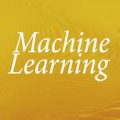In spite of advances in gaming hardware and software, gameplay is often tainted with graphics errors, glitches, and screen artifacts. This proof of concept study presents a machine learning approach for automated detection of graphics corruptions in video games. Based on a sample of representative screen corruption examples, the model was able to identify 10 of the most commonly occurring screen artifacts with reasonable accuracy. Feature representation of the data included discrete Fourier transforms, histograms of oriented gradients, and graph Laplacians. Various combinations of these features were used to train machine learning models that identify individual classes of graphics corruptions and that later were assembled into a single mixed experts "ensemble" classifier. The ensemble classifier was tested on heldout test sets, and produced an accuracy of 84% on the games it had seen before, and 69% on games it had never seen before.
翻译:尽管在游戏硬件和软件方面有所进步,游戏游戏往往带有图形错误、小故障和屏幕文物。这个概念研究的证明为自动检测电子游戏中的图形腐败提供了一种机器学习方法。根据有代表性的屏幕腐败实例样本,模型能够以合理的准确性辨别出10种最常见的屏幕文物。数据的特征表现包括离散的Fourier变形、方向梯度直线图和图解拉placians。这些特征的各种组合被用于培训机器学习模型,这些模型识别了单个图形腐败的类别,后来组装成一个单一的混合专家“共性”分类器。共性分类器在悬置测试器上测试了84%的精度,在以前所看到的游戏中则产生了69%的精度。





